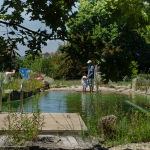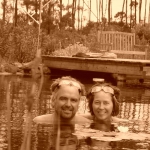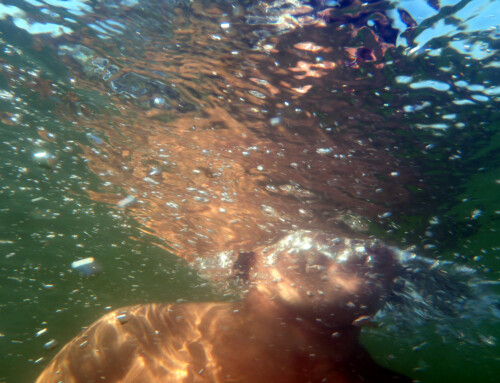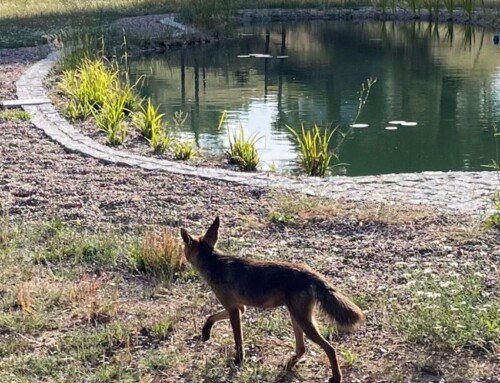All the materials used in the construction of biological pools must meet the requirements of Circular Economy, this is our great challenge for the coming years. The objective is to eliminate waste and continuous consumption of resources. Circular systems employ reuse, sharing, repair, renovation, remanufacturing and recycling to create a closed-loop system, minimizing the use of resource inputs and creating waste, pollution and carbon emissions.
Firstly, longevity and durability, both in materials and in the final product. Biological swimming pools reach decades easily and thus we understand it as a long lasting installation!
Looking at many of the materials used in a biological pool, it is a reality that many materials meet just now the requirements of Circular Economy. Stones, preferably from the place, can be fully reused, the high quality liner is repairable, reusable and recyclable, the plants are of perennial species and the substrates where they grow reusable.
The biggest challenge is all the parts where we still have to use cement blocks and cement mass. The recycling of these materials used a lot of energy and also the production of cement and cement products is not environmentally friendly. For this reason, we have reduced walls and other construction parts to a necessary minimum and have configured many biological pools in a way that they are basically made of liner and the form dug into the ground.
With regard to equipment such as pumps, we depend heavily on producing companies and suppliers for them to install a collection system for damaged or out-of-use equipment and implement a circular system for this equipment. For now, the pumps are low consumption, but very effective. Together with other companies, we influence the producers of equipment so they also follow the requirements of the Circular Economy. This dialogue has already started on international level this year.
 What is a biological swimming pool?
What is a biological swimming pool? Important to know
Important to know Beyond the swim
Beyond the swim How to build
How to build Compare
Compare PB 22.000
PB 22.000 Biological swimming pools of Public use
Biological swimming pools of Public use Janguiscina
Janguiscina Who we are
Who we are Biological swimming pools
Biological swimming pools Landscape architecture
Landscape architecture ETAP
ETAP Solar Sauna
Solar Sauna Rewilding
Rewilding News
News Photo of the month
Photo of the month Gallery
Gallery Holidays with Swimming Pond
Holidays with Swimming Pond Testimonials
Testimonials Awards
Awards Biological swimming pools around the World
Biological swimming pools around the World Piscinas Biológicas® – Live
Piscinas Biológicas® – Live FAQs
FAQs Downloads
Downloads Shop
Shop





